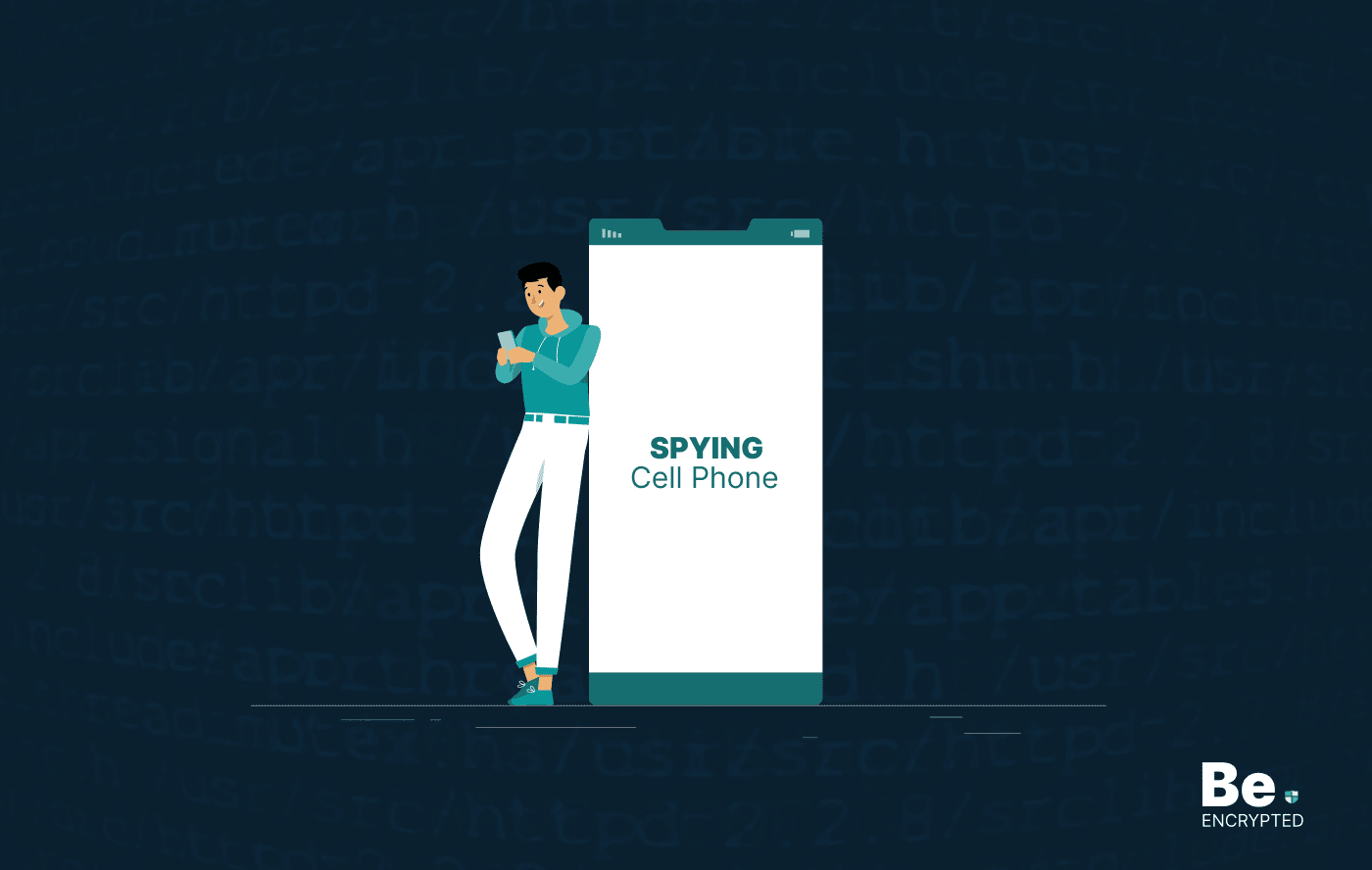Security threats are increasing daily as hackers have become more advanced. Your mobile phone contains essential information, and malicious actors are after this device and using various tactics to exploit it. We list the top 13 most popular mobile security threats that hackers use to harm your cell phone. You can learn about them and keep your smartphone secure.
In addition, using a VPN service and an antivirus will help enhance your cyber hygiene.
Mobile devices have become crucial in our daily lives. From emails to studying online or even streaming movies, we use smartphones. However, while this increased use is convenient, it also leaves users vulnerable to various mobile security threats.
The threats range from phishing scams designed to steal financial information to ransomware programs that block the user’s device until he pays the ransom. Similarly, incidents like the infamous Pegasus malware are enough to start paying attention to mobile security. However, being aware of these top 13 mobile security threats is crucial for protecting your device from security invasions.
Top mobile security threats
Here are the most critical threats to our mobile security.
1. Malicious apps
Malicious apps are one of the most common mobile security threats. These are seemingly legitimate apps embedded with malware designed to steal sensitive user information such as passwords, credit card numbers, photos, etc.
There have been several instances of malware-embedded apps working silently in the background to spy on users and steal their information. Sometimes, these malware attacks might completely take over your device and render it useless. Several types of mobile malware commonly occur, such as:
- Banking malware
- SMS Trojans
- Mobile Adware
- Bot
Only download apps from trusted sources like the Google Play Store or Apple App Store. Such certified and reputable app stores routinely scan their apps for malware and quickly remove threats. The review section within app stores is crucial and helps identify app flaws, vulnerabilities, and threats. Read the reviews before downloading an app and ensure it is from a reputable developer.
Another essential method to ensure security from malicious mobile applications is regularly updating your phone’s operating system. The regular patches you receive for your phone’s operating system are there to patch known vulnerabilities. If these vulnerabilities are left unpatched, they lead to hack attacks and malware invasions.
2. Ransomware
Ransomware is malware that can hijack your phone to encrypt your personal information and hold it hostage. The idea is only to release the decryption key once you pay the ransom. Ransomware attacks happen through phishing campaigns and are often embedded within apps, email attachments, and clickbait links. This ransomware has various variants, such as:
- Crypto malware
- Scareware
- RaaS
- Dxoware.
Mobile ransomware is one of the most prevalent mobile security threats. Several incidents of mobile ransomware attacks have been reported. In 2021 alone, over 4,000 mobile ransomware threat variants were discovered. Therefore, it is crucial to ensure security from such attacks.
Fortunately, there are several ways to protect yourself from ransomware, such as installing a secure anti-malware application on your phone and keeping your phone operating system up to date. It is also crucial to practice good cyber hygiene, which involves remaining vigilant about the apps, documents, or files you download from third-party sources, insecure torrent websites, or email attachments.
Moreover, since ransomware attacks can also occur through clickbait, never click on links or attachments in emails or text messages from unknown senders.
3. Spyware
Spyware is malicious tools or software designed to spy on a victim or steal personal information. Although they have been around for a considerable time, spyware has become increasingly familiar with the advent of smartphones. Since smartphones have access to banking apps, social media accounts, email accounts, and other sensitive information, so they are an ideal host for spyware or stalker ware. Some common types of spyware available such as:
- Keylogger
- Stalkerware
- Trackers.
Although spyware might sound generally harmless, it severely threatens security and privacy. Spyware installs itself within devices in disguise as legitimate applications. However, some spyware, such as FlexiSpy, comes pre-installed and embedded within the device’s operating systems.
A malicious actor might use spyware for several reasons, such as stealing pictures and account credentials, spying on calls and social apps to conduct identity theft, and stealing financial information for fraud.
While spyware is indeed dangerous, it takes little effort to ensure security. The best way to protect yourself from spyware is to install a quality antivirus and anti-spyware program on your device. Also, be careful not to click on suspicious links or open unsolicited attachments. Moreover, since most spyware apps require physical access, passwords protect your device.
4. Mobile phishing scams
Phishing scams are another prevalent mobile security risk. The traditional phishing attack features a malicious threat actor sending the victim a seemingly legitimate email or SMS to steal sensitive information or deploy malware. Within mobile devices, phishing attacks also occur in various faces, such as:
- Banking mobile applications
- Click-fraud advertising embedded within applications
- Crypto Mining code in gaming applications
- Online shopping
To protect yourself from phishing scams, never share your personal information with anyone who contacts you via email or text. In addition, always check the website’s legitimacy before entering personal information. You can do this by checking the website’s security certificate and looking for the padlock icon in your web browser.
5. SMS Phishing
A phishing attack, SMS Phishing, uses social engineering tactics to steal the victim’s personal information, such as credit card information, social security numbers, bank account credentials, crypto wallet keys, and more. SMS Phishing or smishing uses text messages as the attack medium, as its name implies.
A typical attack involves the victim receiving a text message from a legitimate company or organization. The text message would be attractive enough to evoke curiosity and entice the victim to click on the link present within the SMS.
The fraudulent link leads to a phisy web page that directs the victim to reveal personal information. Smishing attacks aim to steal the victim’s finances, social security numbers, and other sensitive information for identity theft.
Never click links or attachments in text messages you don’t recognize to protect yourself from SMS phishing. Always check the legitimacy of a text message before clicking on any links or entering any personal information. You can do this by checking the website’s security certificate and looking for the padlock icon in your web browser.
6. Hijacking devices
Hijacking devices is when a cybercriminal takes control of your phone and uses it to send spam messages to gain access to banking apps and social media platforms. Most malicious actors hijack phones to steal personal information or conduct identity theft or financial fraud.
To conduct the attack, the criminal contacts the victim’s cell phone service provider and requests the service transfer from an old phone to a new one. These attacks are pre-planned, and the criminals can access the victim’s social security number and other personally identifying information, leading to a successful change of cell phone service.
The malicious actor can then use social media platforms to threaten people, commit crimes, or gain access to payment apps to steal money. Once they have access to the victim’s phone, they change passwords. They access mobile banking apps, payment platforms, unique media platforms, and email accounts using the new phone as auto-recovery.
To protect your device, it is crucial to remain vigilant and look out for the telltale signs of a phone hijacking. Whenever you get a “no signal” on your phone for a considerable time, immediately contact your service provider, even after restraining your phone. Also, ensure security by using multiple authentications for payment apps, cryptocurrency wallets, and banking apps.
7. Unsecured WiFi networks
Unsecured WiFi networks are often free and found in cafes, airports, and malls. While they allow convenience, they are another primary concern for mobile security. Cybercriminals can hack into these networks and steal personal information or install ransomware or spyware on your device.
The most common issue with unsecured WiFi networks is WiFi sniffing. These unsecured WiFi spots provide an unencrypted connection, giving anyone with the right tools a chance to intercept data traveling between the device and the WiFi access point. Moreover, it becomes easier for the threat actor to steal your information due to the absence of web page encryption.
Always use a VPN to protect yourself from unsecured WiFi networks. This tool creates a secure connection between your device and the internet, preventing anyone from being able to see your traffic or steal your personal information. It is also crucial to only use trusted WiFi networks, browse websites with HTTPS encryption and never access personal accounts or banking apps over public unsecured wifis.
8. Fake websites and apps for kids
Parents are increasingly concerned about their children’s safety when using mobile devices. Several fake websites and apps aimed at kids can threaten their mobile security. Some apps look similar to the real thing but contain malicious content that can harm your device or steal your personal information.
There have been several malicious apps and games for children that often worked as spyware. Most of these apps quietly work in the background, taking pictures, recording phone calls, and silently transmitting all personal and private information back to hackers.
Parents must remain vigilant about what their children are doing online to ensure security from such threats. Since most apps are malicious, parents can mitigate these risks by installing secure antivirus software on their devices.
9. Man-in-the-Middle (MitM) attacks
Man-in-the-middle attacks are among the oldest forms of cyberattacks. They occur when a hacker manages to get between you and the website you’re visiting, allowing them to see and modify the traffic between you and the site. These attacks mainly aim to steal personal information for identity theft or financial gain.
Threat actors typically conduct these attacks by setting up malicious wifi spots that aren’t password protected. Such malicious wifi spots allow threat actors to access the victim’s personal information once they connect. The known methods for conducting a MitM attack are IP spoofing, ARP spoofing, and DNS spoofing.
To protect yourself from MitM attacks, always use a VPN when connecting to public WiFi networks. Also, verify the SSL certificate of any sites you visit.
10. Jailbreaking and rooting
Rooting is the process of gaining root access to your Android device. This allows you to access system files and folders, giving you more control over your device. However, rooting also makes your device vulnerable to malware and other security threats.
Use a reputable mobile security app to scan your device for malware. A reputable mobile security app like Bitdefender can prevent viruses and other threats from infecting your devices.
11. Device and OS exploits
Device and OS exploits are some of the most common mobile privacy and security threats. These attacks take advantage of vulnerabilities in the operating system or the devices themselves. Attackers can use these exploits to access your data or control your device.
Keep your device and operating system up-to-date to protect yourself from device and OS exploits. Make sure you install all available updates as soon as they become available. Additionally, use a good security solution to protect your device against exploits.
12. Weak passwords
A strong password is one of the most crucial elements of ensuring information security. It is best to use strong passwords because weak passwords are easy to guess and break. Nowadays, several computer programs called password crackers can search through thousands of words in seconds.
Additionally, future hardware advances may increase the speed of guessing so fast that every computer on Earth could decode a six-letter password within an hour.
Therefore, it is crucial to impose password security on your device. Ensure that your password mixes letters, numbers, and symbols, making it hard for the theta actor to guess. You can also deploy safe password managers that can generate strong passwords and even remember them for you.
13. Theft or lost phone
When you lose your phone, you have to worry about someone finding it and accessing your personal information, but you also have to worry about the data being leaked. If you have confidential information on your phone, anyone who finds it could access it.
You can protect yourself from this by encrypting your data and using a strong password. You should also report your lost phone as soon as possible to help prevent any further damage.
Share this article
About the Author
Hasnain Khalid is a passionate streaming and security enthusiast, who has proved his expertise on renowned tech publishers. With a keen eye for online safety and a love for all strеaming matters, Hasnain combinеs his еxpеrtisе to navigatе thе digital world with confidеncе and providе valuablе insights to usеrs worldwidе.
More from Hasnain KhalidRelated Posts

Top Mac Security Threats: Learn How to Prevent Them
KEY TAKEAWAYS Threat actors use social engineering tactics, fake virus alert scams, or trick users i...

How to Stop Someone from Spying on My Cell Phone
KEY TAKEAWAYS Cell phone spying has become a major issue, as everyone keeps their important data, li...

OpenSSL Vulnerability: What Do You Need to Know?
A security hole has been found in OpenSSL, which has now been addressed and fixed. If exploited, the...

How Data Encryption Protects Your Devices
KEY TAKEAWAYS Cybercrimes are increasing daily. Every minute, someone in the world faces a cyberatta...

How Can Your USB Device Pose Security Risks
KEY TAKEAWAYS USB devices are mostly passed around by computer users, like silicon business cards. S...

12 Signs to Know if Your Phone is Hacked
KEY TAKEAWAYS Smartphones have become more of a curse than a blessing. They have become a popular ta...


